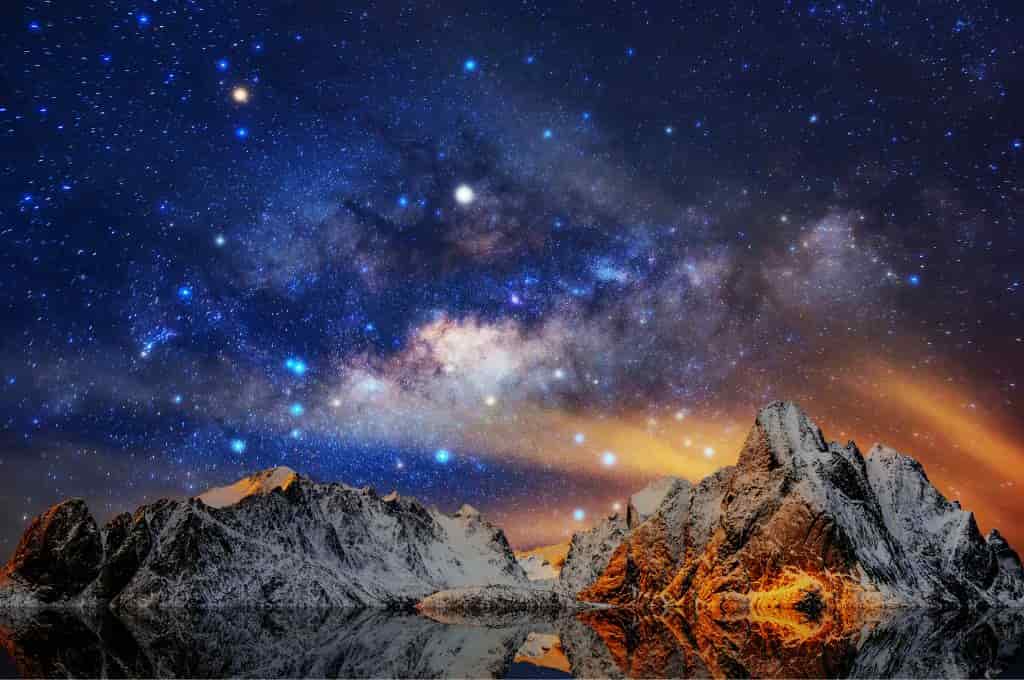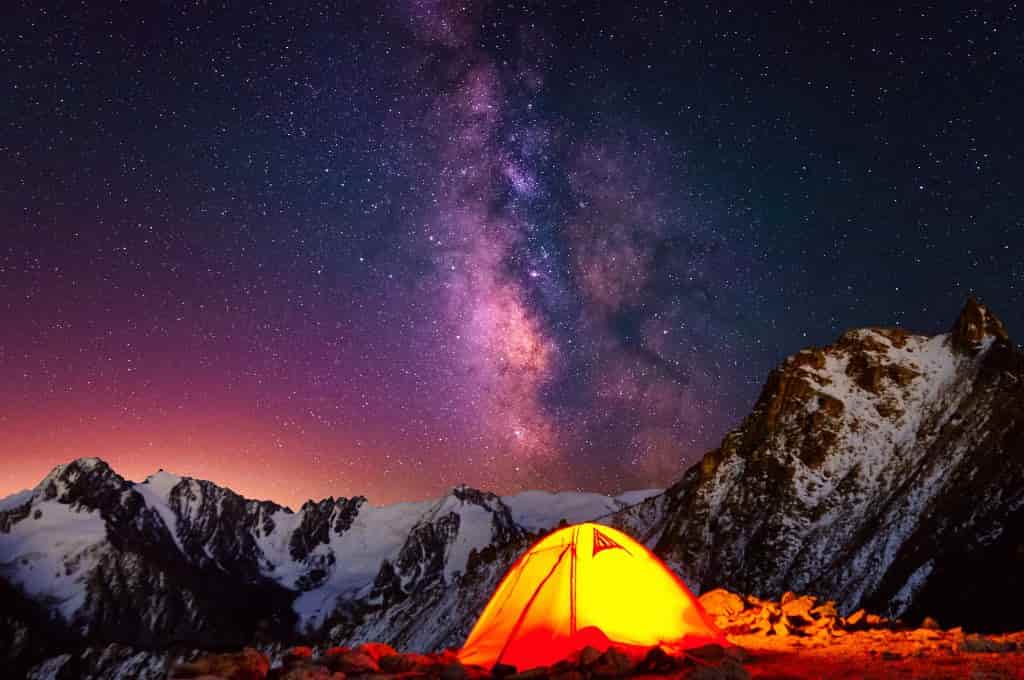Best Places to See Milky Way & How to Capture It?
What is the Milky Way?
The Milky Way is a spiral-shaped galaxy containing several hundred billion stars, one of which is our Sun. The Earth is also located within the Milky Way Galaxy. If you are in a place with a very dark night sky, you may occasionally see the Milky Way as a thick band of stars in the sky.
When Can you see the Milky Way?
The Milky Way season runs from February to October. The best time to see the Milky Way is between 00:00 and 5:00 p.m. Viewing times, however, differ depending on hemisphere and latitude. A dark, cloudless sky is required for optimal viewing. Nights with a new moon or within a few days of a new Moon are also excellent for observing the Milky Way.

Viewing the Milky Way galaxy
Seeing the galaxy from the night sky is one of the most awe-inspiring memories a person can have. Although surreal and unimaginable, this experience can be captured in photographs. This is where astrophotography comes in handy. After years of practice and precision, many astronomy photographers capture breathtaking images of the Milky Way. These images of the Milky Way have been caught with telescopes and specialized robotic heads equipped with CC cameras.
Unfortunately, a digital camera can rarely master the art of photographing the galaxy. The possibility exists, though. You can take pictures of the Milky Way in all its glory with a point-and-shoot camera if you are in the right place at the right time and use the right techniques. To help you through the process, we’ve compiled a list of insights and details and the perfect locations for witnessing and photographing the Milky Way galaxy.
Capturing the Milky Way – Where and How?
Capturing the night sky and the Milky Way in photographs can be a rewarding experience. However, photographing it is a little more difficult than simply adjusting a few settings. Don’t worry, we’ll walk you through the process of recording its brilliance with your own DSLR or mirrorless camera.

Best Places to See the Milky Way – Where to Go?
The barriers that prevent a clear night-time view of the Milky Way are absent in many locations around the globe. These areas are mostly uninhabited and devoid of light pollution, making them ideal for capturing the Milky Way. The amazing Milky Way can be seen from these spots on each continent, which are in remote regions of our planet.
1). Arches National Park, USA – One of the best places in the USA to view the Milky Way is in Utah. It is located at a high elevation of 5000+ feet, far from the main sources of light pollution. The photographers can capture the spectacular geological formations in a high desert landscape against the surreal backdrop of the shining Milky Way at night. The best places to photograph the Milky Way in Arches National Park are the Delicate Arch, Turret Arch, and Balanced Arch.
2). Banff National Park, Canada –The stunning park is yet another option in the North American region to witness the Milky Way. Located in the Canadian Rockies, this place is surrounded by mountains. The city of Banff is the only source of light pollution in the area, but if you walk away from the town, you will be treated to an incredible spectacle. The Ice Fields Parkway, at 6000 feet, is an excellent site for viewing the Milky Way.
3). Dolomites, Italy – The Dolomites in Italy are another amazing location for viewing the Milky Way and the galactic center. The entire mountain range is sparsely populated, with peaks reaching 10.000 feet, making it perfect for viewing the Milky Way.

4). Sahara Desert, Tunisia – The mystical Sahara desert is a popular spot to see and photograph the Milky Way—a place mostly untouched by human populations and rarely close to epicenters of light pollution. Tunisia and neighboring Morocco are a haven for stargazers, thanks to their dark skies and haunting solitude.
5). Mount Bromo, Indonesia – While light pollution, high temperatures, and humidity in Asia continue to make it difficult to see the Milky Way, there are still some fantastic locations in far-off places. For instance, Mount Bromo on the Indonesian island of Java is regarded as the best location in Asia to capture the Milky Way. At 7,500 feet, the area is surrounded by active volcanoes, allowing visitors to capture the Milky Way over volcanoes that spew ash and smoke into the air.
6). Okinawa, Japan – Moving to East Asia, the pristine Ishigaki Islands in Okinawa are unquestionably a paradise for viewing the starry Milky Way. Out of all the Japanese Islands, this one is the closest to the equator and is a must-see sight in a clear night sky. Ishigaki makes 84 of the 88 modern constellations visible to the naked eye, especially during the summer when the air is crisp and clean. A must-see location on the island, about 2000 kilometers from Tokyo, is the Ishigakijima Astronomical Observatory, a NAOJ observational research facility for astronomers. Guests can visit the observatory and participate in stargazing events, which allow them to observe the Milky Way through the research facility’s 105 cm diameter Murikabushi telescope.
7). Namib Desert, Namibia – The Namib Desert is perfectly flat, allowing you to see the sky from every angle. Since the desert is located far from any human settlement, it has dark skies and no light pollution. It has recently become a more accessible and well-liked location for astrophotography due to the extended Milky Way season available at this latitude.
8). Australian Outback – When it comes to stargazing, the Australian Outback is well-known for providing a dazzling experience. The sky is very dark because it is far from any urban light pollution and the Milky Way is clearly visible. Uluru, Arkaloora Wilderness Sanctuary, and Warrumbungle National Park are some of the best places in Australia to see the stars at night.

How to Capture the Milky Way? Photography Tips
The first step in capturing the Milky Way is to purchase a camera that allows you to control the exposure settings. This includes the aperture, shutter speed, and ISO. A high-quality DSLR should suffice for this task, though many smartphones, including the Android phone, iPhone, and others, now have comparable camera quality and control. Once you’ve chosen your device, you can scout for the ideal location from the list above or use the light pollution map to find a suitable site. The light pollution map clearly shows which locations offer a view of the Milky Way based on light pollution and other climate factors. You can now capture your photos if you use proper light-focusing settings.
For beginners, the following camera settings are recommended: aperture f/2.8 or the widest your lens allows, shutter speed between 10-25 seconds, and ISO 3200-400. After you’ve adjusted your settings per the suggestions, you can set the white balance to 4000K to maintain the natural color uniformity of the photos. Setting the focus to catch razor-sharp images is the most difficult and time-consuming aspect of shooting the Milky Way. This must be done manually by zooming in on the stars and ensuring that your focus is correct.
Begin by switching to live view mode and using the digital focus magnifier to zoom in on a star or group of stars in the center of the frame. After that, you can move your focus ring until you see a sharp and clear image. If you’re using a smartphone, this would imply zooming in with your touch screen.
These are some pointers and tricks for astronomy enthusiasts interested in photographing the stars and the Milky Way. You can start your exploration of the galaxy and beyond with our list of places that offer a lucid, serene view of the galaxy.
